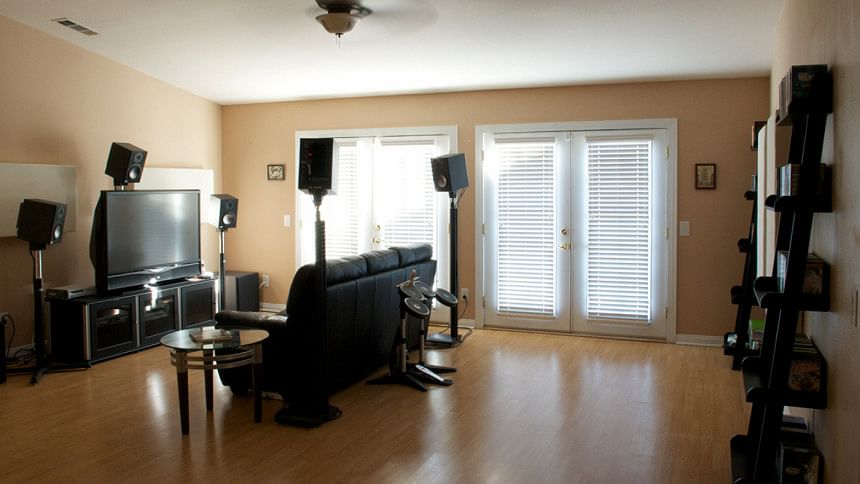How to create home cinema in your living room

Lights low, popcorn ready, wine open, shoes off – there's nothing quite like a night in with a movie in the comfort of your own home. And these days, you can even get cinema-quality sound and pictures.
However, if you want to recreate that night-at-the-movies feeling in your own living room, there are a few technical points to take into consideration. If you want to use a projector, for example, you will need to block out any outside light.
"For projectors, the room has to be absolutely dark," says Christoph de Leuw from German computer magazine Computerbild. "Light diminishes the contrast and obscures the detail in dark scenes – the brighter the room, the more the picture looks soft and grey."
TVs are brighter, so the lighting is less critical, he says. In fact, "a small lamp behind the device can actually improve the image impression".
Bert Koessler from the home cinema website Heimkino-Praxis recommends not only turning out all the lights when using a projector but also shrouding the room – or at least the area around the screen – in dark colours. "A really dark room is always preferable," he says.
Acoustics also play an important role in the home cinema experience. To determine if a room has an echo, simply clap your hands.
If it does, installing porous absorbers can help. These can be attached to reflection points on the walls and ceiling between the loudspeaker and the listening area.
Another way to improve sound is to put a carpet on the floor in front of the speakers. Curtains and books can also help.
As for speakers, they should be positioned as symmetrically as possible and at the recommended angle to the listening area. Standard audio systems such as Dolby Digital usually come with instructions on this.
"The subwoofer can be placed relatively freely in the room," Koessler adds.
The best way to achieve a sound you are happy with is to try different speaker positions around the room until you get a satisfactory result.
If you use an antenna, you'll also have to consider the positioning of that device. "Reception is usually best near a window, but antennas with built-in amplifiers often receive sufficiently strong radio waves at the other end of the room," de Leuw says.
Of course, the antenna can't achieve miracles if the reception is disrupted by the structure of the building or other sources of disturbance.
Copyright: Star Online/ Asia News Network

 For all latest news, follow The Daily Star's Google News channel.
For all latest news, follow The Daily Star's Google News channel. 



Comments